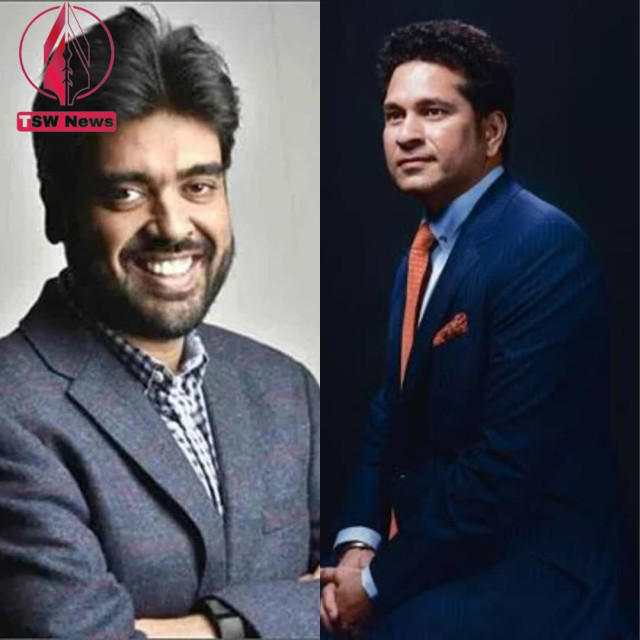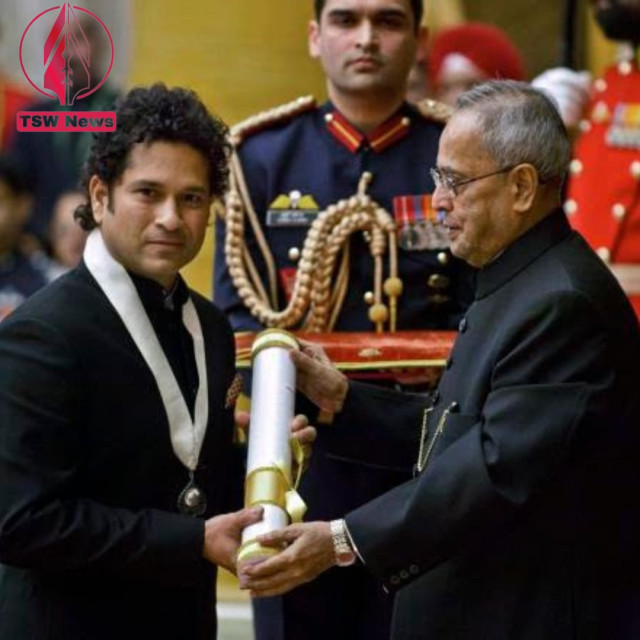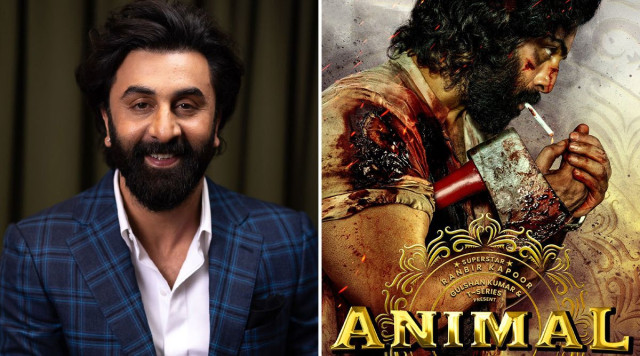Master Blaster Sachin Tendulkar Turns 50, A Glimpse of His Magnificient Career by Kunal Pradhan
- Posted on April 21, 2023
- News
- By TSW NEWS DESK
- 214 Views
In Sahiitya
Sahawas, a literary newspaper in suburban Mumbai, the Tendulkar family greeted
the birth of their fourth child fifty years ago. They chose to name him Sachin.
During the early 1970s, this was India's still-developing country under the
control of the Licence Raj when the chants "garibi hatao" and
"unity in diversity" rang out, two years before the declaration of
Emergency and ten years before the Indian team would become the talk of the
cricketing world at Lord's.

For the following
ten years, the nation slowly started to learn about Sachin after being
oblivious to the impending arrival of a future icon. He first came to attention
as a 14-year-old due to his ravenous thirst for running in the Mumbai maidans;
later, at the age of 16, he made his Indian team debut after impressing the
legends of the era at a specially organized nets session; and finally, in 1989,
In Peshawar, he danced down the street to a gyrating Abdul Qadir, and in
Sialkot, he stood up to Waqar Younis despite having a bleeding nose.
Sachin became the
symbol of a generation holding its breath in 1990s India, which had just been
made open to the rest of the globe. An age that he would define and be a part
of. Sachin remained the only constant during the following 20 years. The nation
acquired new services, amenities, beverages, automobiles, communications
networks, and TV channels while suffering from intergroup violence and
political unrest.
His reputation developed and persisted so that the individual stories of an entire community were inextricably entwined with his accomplishments. We recall where we were when the curly-haired young man was initially on the pitch wearing an India jersey, like how we can recognize what we were doing in 1994 when he opened the innings in a one-day match during a chilly morning in Auckland.

In 1998, at the
"Desert Storm" in Sharjah, he destroyed Australia. When he narrowly
lost a lone battle in Chennai against Pakistan. In Sydney, in 2004, he
collected 241, all on the on-side. Twenty-one years into his career, he played
in Gwalior and scored a double century pushing the limits of the one-day
format.
After India won
the 2011 World Cup, his teammates carried him off the pitch at Mumbai's
Wankhede Stadium on their shoulders. And when he, now 40 years old, said
goodbye to a sport he had molded into his image while sobbing in front of a
stand named after him on his home pitch.
In vast parts of
India, people who were little children in the 1980s, teenagers in the 1990s,
young professionals in the 2000s, and managers in the 2010s all had Tendulkar
memories interwind with their own highs and lows, romances and breakups,
promotions and Passovers.
It has been ten
years since it was last; this way is challenging to envision Sachin without
cricket and even harder to fathom cricket without Sachin. However, the most
difficult part has been coming to terms with his genius no longer enlivens our
own drab, lifeless existence.
For the first
half of my media career, I covered cricket and had a few unique opportunities
to gain insight into Sachin's thoughts and character. For instance, Sachin,
with eyes sparkling, grabbed me aside in the Barbados airport in 2002 to inform
me that the appropriate greeting in the Caribbean is a fist on the heart.
When planning my
next service in a table tennis doubles match against Sachin in Lahore during
the 2004 Pakistan tour, my ambidextrous opponent switched from his right hand
to his left, and the paddle stopped. The game with five ferocious smashes and
grinned naughtily.
While playing
Snake on his Nokia phone while waiting between tests, Sachin, who was sitting
two seats away, suddenly grabbed my shirt and handed me the phone. The screen
was completely black, and the Snake had run out of food.
These occasions
revealed some of an otherwise hidden personality's love of people and
tradition, his intrinsic naughty side, and his competitive appetite. The
cricketer Sachin was a prodigy, but no one is ever perfect, including him.
Like any human,
he was flawed and made mistakes. One could argue that he wasn't always vocal
about the player's interests, whether there were disagreements with the Indian
board or among teammates.
Between the springs of 2011 and 2012, the pursuit of this statistical anomaly, the 100th international hundred, consumed his batting, demonstrating how his love for milestones, particularly centuries, could occasionally become so all-consuming.

He was sometimes
more adept at handling the endgame than his teammates MS Dhoni, Virat Kohli,
VVS Laxman, and Rishabh Pant. Unlike the all-powerful cricketing god, we like
to think of him as Sachin occasionally faltered and occasionally succeeded.
However, instead of taking anything away from what Sachin meant to an Indian generation that connected so strongly with him, these relative fallibilities gave an actual depth to it.
Therefore, as
Sachin approaches his 50th birthday, the question is not what achievement means
to him but what it means to us. First, it reminds us that we have all gotten
older as the sideburns and temple hair begin to thin.
Because the world
of limitless possibilities that we previously lived in is gone. And so if we,
the offspring of that standard time and place, maybe split along class, caste,
ideology, or politics, there will always be one thing that unites us: a cricket
player whose bat striking the ball served as the music to our maturation.




